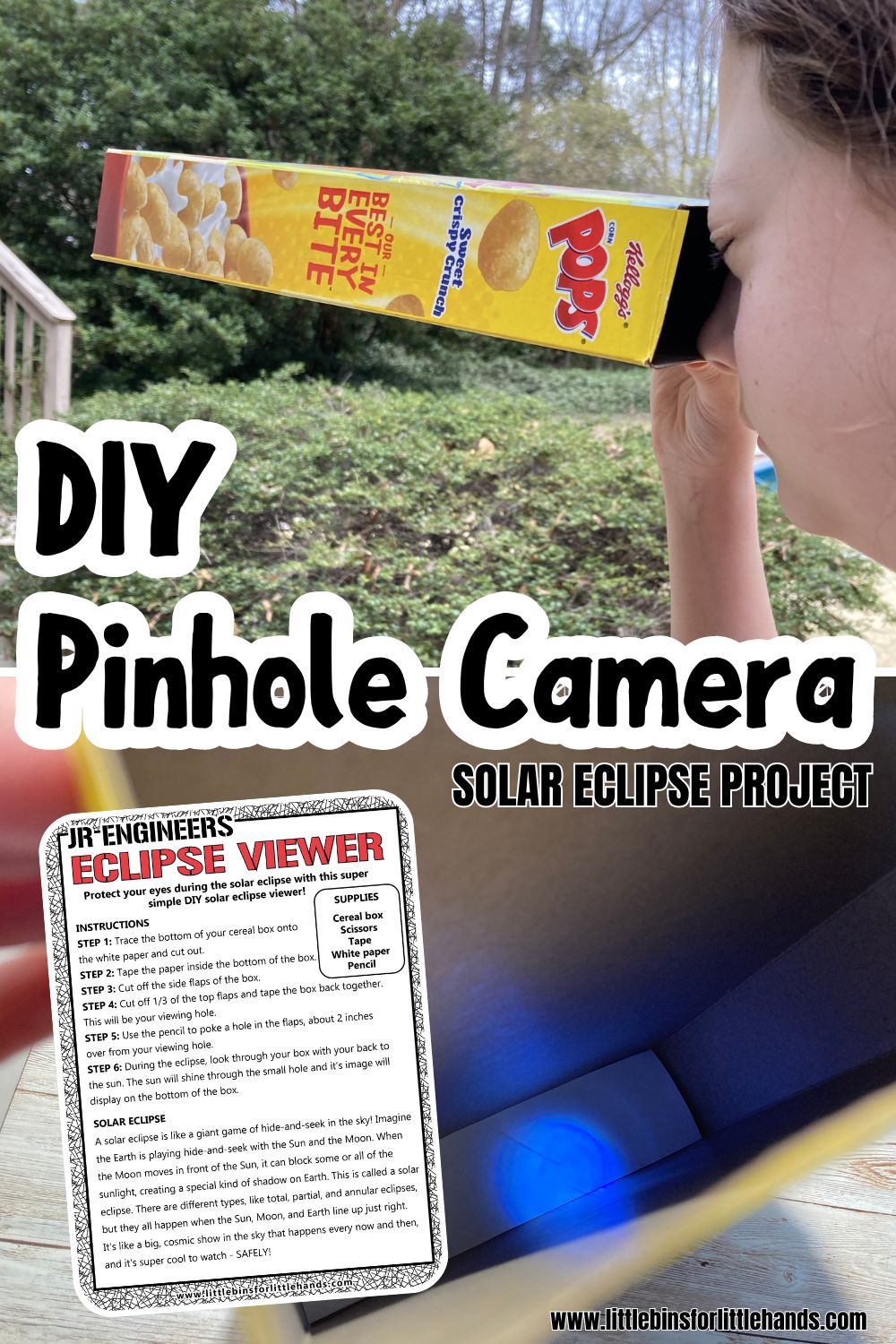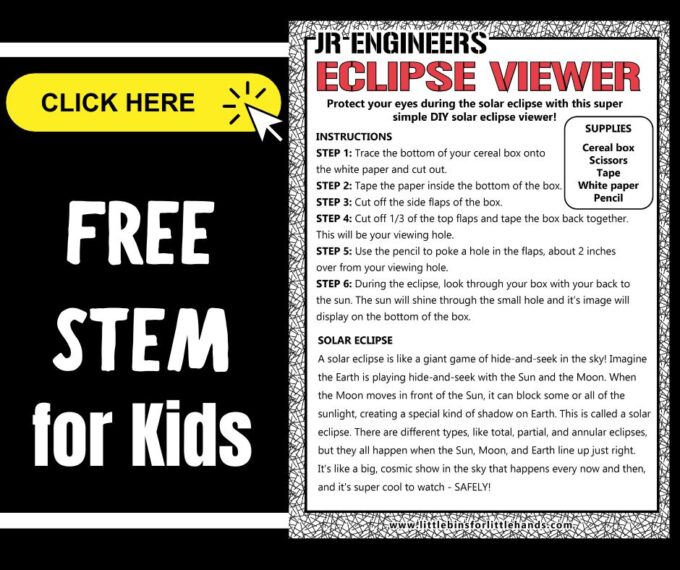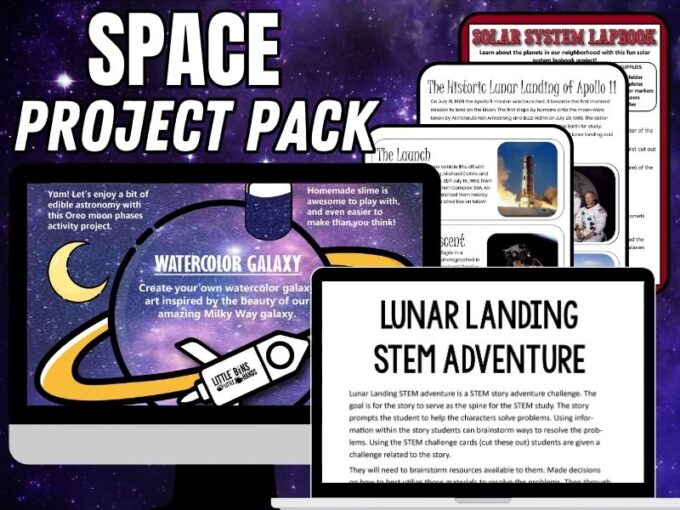An eclipse is a breathtaking spectacle, drawing countless gazes skyward. However, looking at one requires caution to protect our eyes from harm. Enter the pinhole camera – a simple yet ingenious device that allows you to experience an eclipse safely. In this guide, we will show you how to make a pinhole camera from a cereal box, you will learn what an eclipse is, and how a DIY pinhole camera allows you to view this amazing phenomena safely!
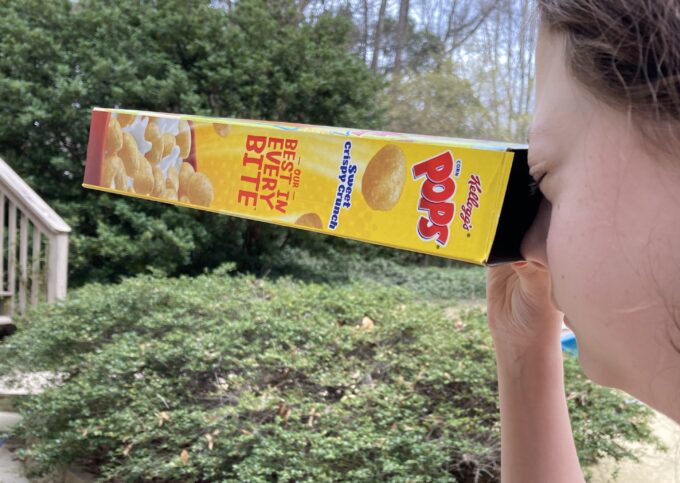
What Is A Pinhole Camera?
A pinhole camera is a simple type of camera that uses a tiny hole to capture pictures. Instead of a lens like you see on regular cameras, a pinhole camera has a small opening, or “pinhole,” through which light enters. Here’s how it works:
Light Enters Through a Tiny Hole: Imagine a dark box with a tiny hole on one side. When you point this hole toward something bright, like the sun or a well-lit scene, light travels through the hole and enters the box.
Image Appears Inside the Box: The light that comes through the pinhole creates an upside-down image on the opposite side of the box. This happens because light travels in straight lines.
Capture of Images: If you place a piece of photographic paper or film on the side where the image forms, it will capture the light and create a picture. The longer you leave the paper or film exposed to light, the clearer the image becomes.
Inverted Image: Remember that the image formed inside the box is upside-down. This happens because light travels straight through the pinhole and crosses over, creating an inverted projection.
A basic pinhole camera is an effective way to witness an eclipse without damaging your eyes in the process.
What Is An Eclipse?
Let’s unravel the mystery of eclipses. An eclipse occurs when one celestial body moves into the shadow cast by another. In the context of solar and lunar eclipses, Earth, the moon, and the sun align in various configurations.
Solar Eclipse
During a solar eclipse, the moon positions itself between the Earth and the sun, casting its shadow upon our planet.
There are three types of solar eclipses: total, partial, and annular, each offering a unique spectacle. Total solar eclipses, where the moon completely obscures the sun, are particularly awe-inspiring.
Lunar Eclipse
Conversely, a lunar eclipse unfolds when the Earth moves between the sun and the moon, causing our planet’s shadow to fall upon the lunar surface. Lunar eclipses come in three forms: total, partial, and penumbral, each determined by the extent of Earth’s shadow.
How To Make A Pinhole Camera
Now that we’ve established the significance of both eclipses and pinhole cameras, let’s embark on our journey to create a DIY pinhole camera from a cereal box. Here’s what you’ll need:
Supplies:
- Empty cereal box
- Aluminum foil
- Tape (preferably black)
- A small piece of white paper
- A pin or needle
- Scissors
- A ruler
- A craft knife (optional)
NOTE: Never look directly at the sun or a solar eclipse. It is very dangerous.
Adult supervision is recommended at all times.
Instructions:
STEP 1: Trace the bottom of your cereal box onto the white paper and cut it out.
STEP 2: Tape the paper inside the bottom of the box.
STEP 3: Cut off the side flaps of the box.
STEP 4: Cut off 1/3 of the top flaps and tape the box back together. This will be your viewing hole.
STEP 5: Use the pencil to poke a hole in the flaps, about 2 inches over from your viewing hole.
STEP 6: During the eclipse, look through your box with your back to the sun. The sun will shine through the small hole and it’s image will display on the bottom of the box.
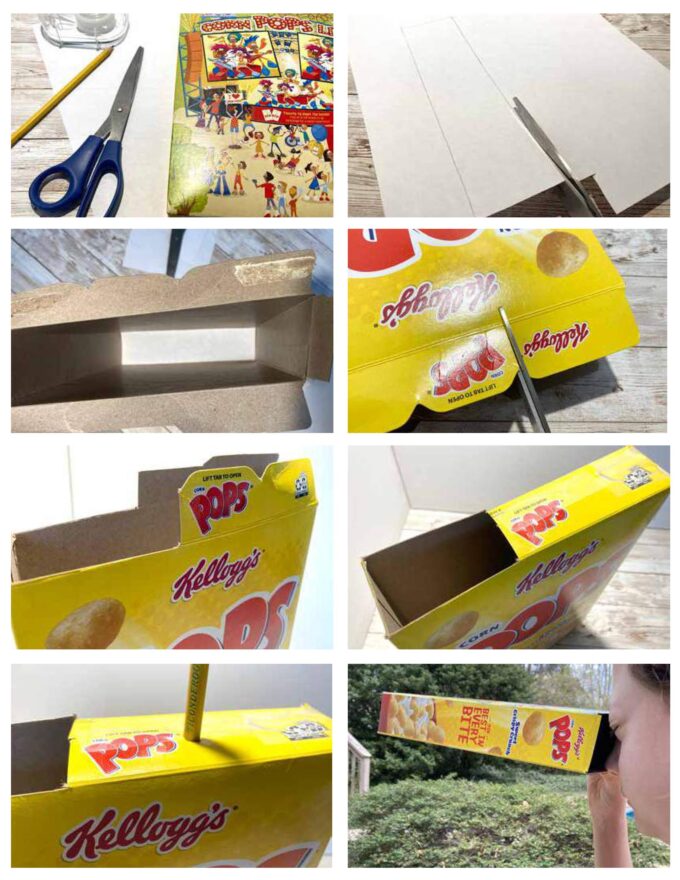
Free Printable Pin Hole Camera Instructions
You can download free instructions for a DIY pinhole camera here. Join the club for all of our fantastic printables and exclusive ones, too!
How to Safely View An Eclipse With Your Camera
With your homemade pinhole camera, you can safely observe the eclipse. Position yourself with your back to the sun and hold the pinhole camera so that sunlight passes through the pinhole and projects onto the white paper inside the box.
You’ll witness a small, inverted image of the eclipse unfolding, allowing you to marvel at this celestial spectacle without risking any eye damage.
Here we have used a flashlight to show the light projection inside the pin hole camera.
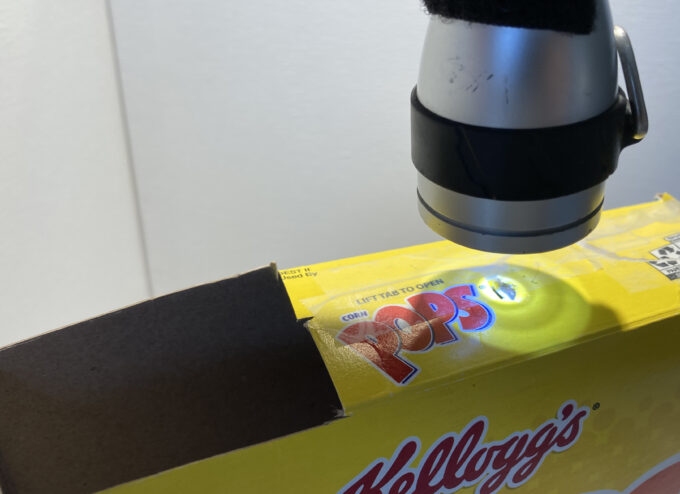
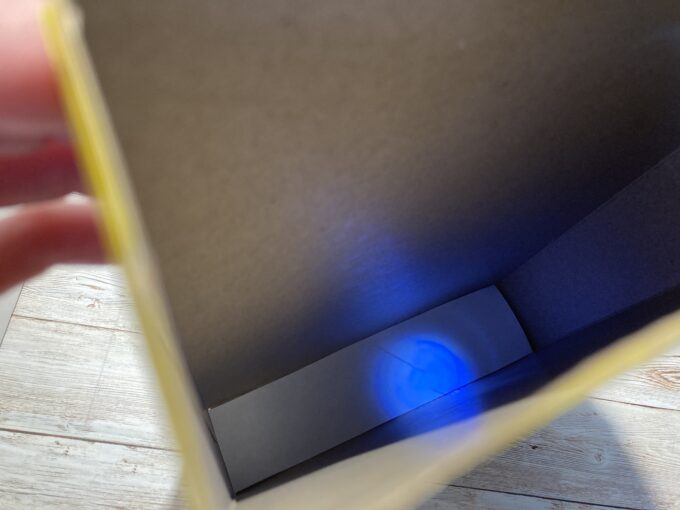
More Solar Eclipse, Sun, and Moon Activities
Lead up to the big event with fun solar eclipse STEM activities that feature the sun, moon, and the eclipse! I have chosen some fun and simple solar eclipse activities for kids to try at home or with a group!
- Oreo Moon Phases
- Glow In The Dark Moon Craft
- Phases of the Moon Activity
- DIY Planetarium
- Solar System Model
- Watercolor Galaxy
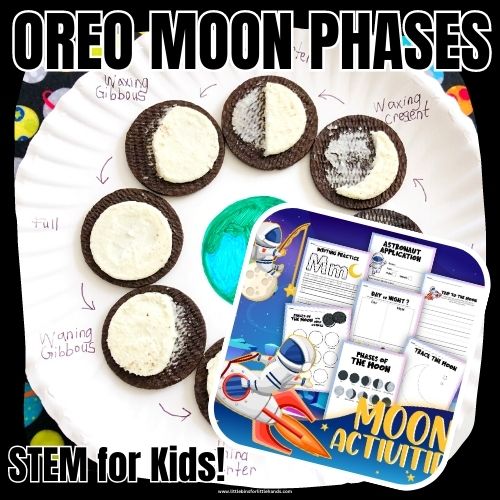
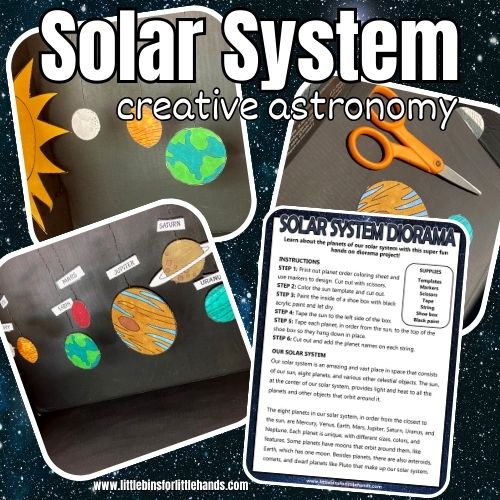

Printable Space Projects Pack
With 250+ pages of hands-on fun space themed fun, you can easily explore classic space themes with your kiddos including moon phases, constellations, the solar system, and of course the 1969 Apollo 11 lunar landing with Neil Armstrong.
⭐️ Activities include supply lists, instructions, and step-by-step pictures. Also Includes FULL Space Camp Week. ⭐️
Celebrate the 1969 lunar landing with easy-to-do activities at home, with groups, at camp, or in the classroom. Read up on this famous event and learn more about Neil Armstrong.
- Moon STEAM activities combine science, technology, engineering, art, and math with supply lists, set-up and photos, and science information. Craters, fizzy moon rocks, edible moon phases, watercolor galaxies, a DIY planetarium, a bottle rocket, and MUCH MORE!
- Printable Moon STEM challenges are simple but engaging for home or classroom use. Also included is a Moon-themed STEM Story with challenges perfect for going on a STEM adventure inside or outside!
- Moon phases & Constellation activities include charting moon phases, oreo moon phases, moon phases mini book, and more!
- Solar System activities include a solar system lapbook template and plenty of information about the solar system and beyond!
- Moon extras include I-Spy, an algorithm game, a binary code project, 3D rocket building, thaumatropes, and more!


